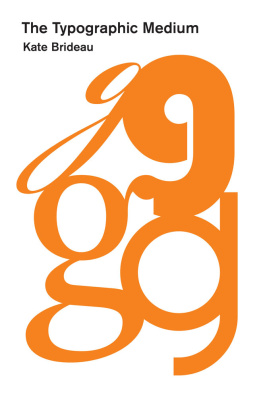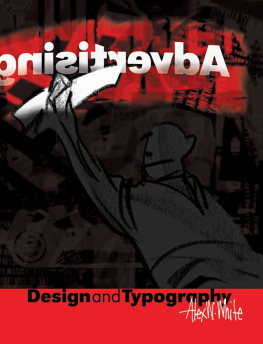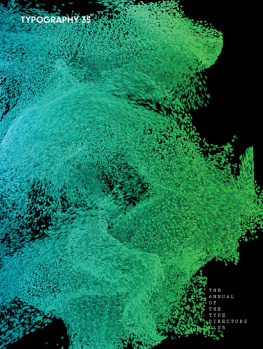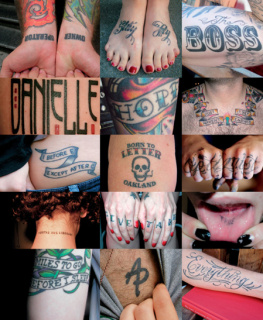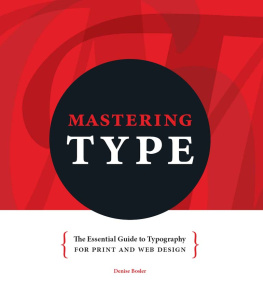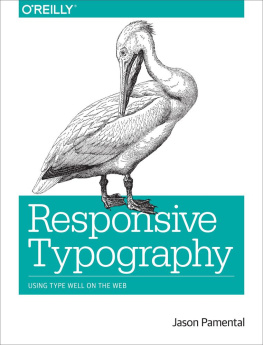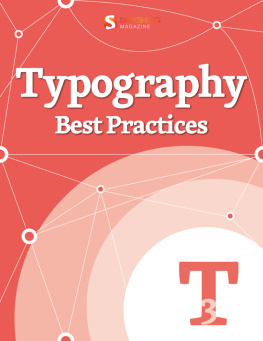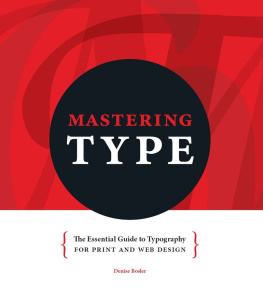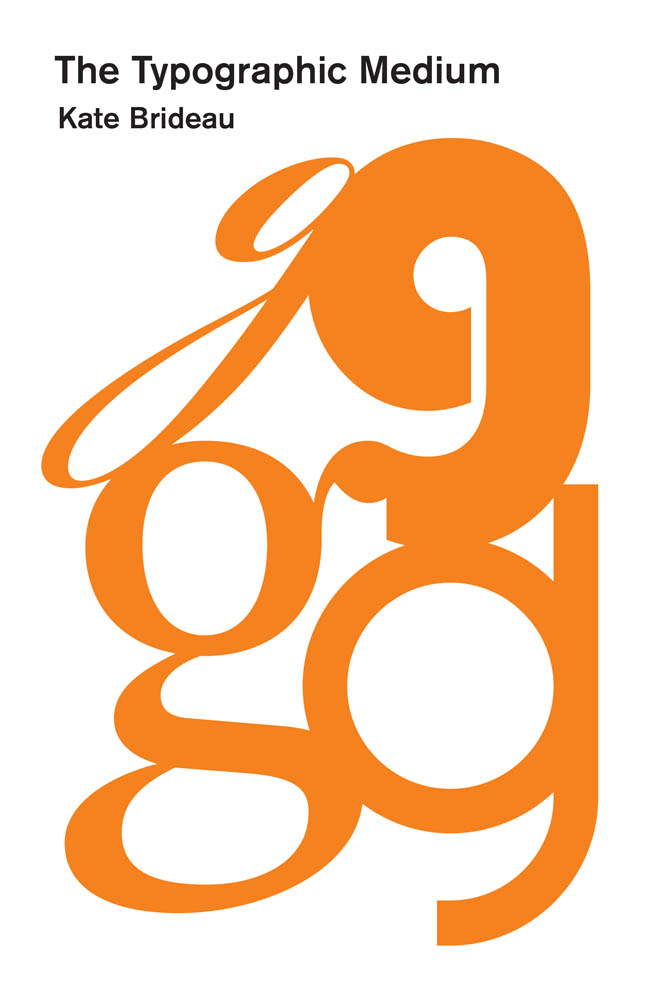
The Typographic Medium
History and Foundations of Information Science
Edited by Michael Buckland, Jonathan Furner, and Markus Krajewski
Human Information Retrieval by Julian Warner
Good Faith Collaboration: The Culture of Wikipedia by Joseph Michael Reagle Jr.
Paper Machines: About Cards & Catalogs, 15481929 by Markus Krajewski, translated by Peter Krapp
Information and Intrigue: From Index Cards to Dewey Decimals to Alger Hiss by Colin B. Burke
Indexing It All: The Subject in the Age of Documentation, Information, and Data by Ronald E. Day
Bibliometrics and Research Evaluation: The Good, the Bad, and the Ugly by Yves Gingras
Search Foundations: Toward a Science of Technology-Mediated Experience by Sachi Arafat and Elham Ashoori
The Information Manifold: Why Computers Cant Solve Algorithmic Bias and Fake News by Antonio Badia
Documentarity: Evidence, Ontology, and Inscription by Ronald E. Day
The Infographic: A History of Data Graphics in News and Communications by Murray Dick
The Typographic Medium by Kate Brideau
The Typographic Medium
Kate Brideau
The MIT Press Cambridge, Massachusetts London, England
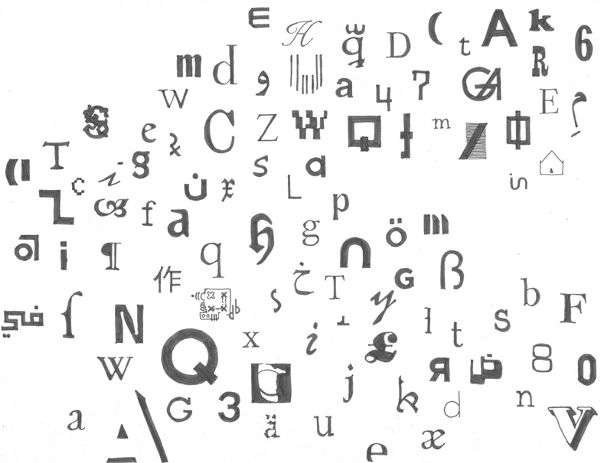
Source: author.
2021 Massachusetts Institute of Technology
All rights reserved. No part of this book may be reproduced in any form by any electronic or mechanical means (including photocopying, recording, or information storage and retrieval) without permission in writing from the publisher.
The MIT Press would like to thank the anonymous peer reviewers who provided comments on drafts of this book. The generous work of academic experts is essential for establishing the authority and quality of our publications. We acknowledge with gratitude the contributions of these otherwise uncredited readers.
This book was set in Arnhem Pro Blond and Berthold Akzidenz Grotesk by The MIT Press.
Library of Congress Cataloging-in-Publication Data
Names: Brideau, Kate, author.
Title: The typographic medium / Kate Brideau.
Description: Cambridge, Massachusetts : The MIT Press, [2021] | Series: History and foundations of information science | Includes bibliographical references and index.
Identifiers: LCCN 2020037099 | ISBN 9780262045858 (hardcover)
Subjects: LCSH: Graphic design (Typography) | Graphic design (Typography)History. | Type and type-founding. | Type and type-foundingHistory.
Classification: LCC Z246 .B7375 2021 | DDC 686.2/2dc23
LC record available at https://lccn.loc.gov/2020037099
10 9 8 7 6 5 4 3 2 1
d_r0
For Beth & Darcy
Contents
Preface and Acknowledgments
The illustrations that appear throughout this book were drawn by handperhaps an odd choice for a text about a medium that is mass produced. However, this is inspired in part by the aesthetic of Gerrit Noordzijs books (The Stroke and Letterletter), and to a lesser extent by other calligraphic teachers like Edward Johnston (Writing & Illuminating & Lettering). The basic principle behind the use of calligraphy in typographic education is that drawing these characters by hand allows one to become physically familiar with the nature of these shapes and the possibilities they contain. A similar principle guides this books illustrations as well. Producing these drawings allows for a closer study of formssince the eye and hand together slow down the act of observation; the drawing hand produces a different kind of thought. Further, this process provides me a personal, albeit amateur, glimpse into the significant amount of detail and labor involved in typographic design. The results of that drawing are illustrations of type, not type itselfjust as in chapter 7 the illustration of the brain is not a brain itself. As such, the majority of the creativity in these illustrations belongs to others, but any technical errors are my own.
At the start of each chapter, youll find a diagram of typographic anatomy referenced in that chapter. Typography has its own (relatively settled) vocabulary, full of stems, eyes, and tails; and rather than having a single anatomical glossary at the back of the book, these diagrams are intended to offer greater ease of access. You may find by the later chapters that the specialist language of typography has become familiar to you (if you arent familiar with it already). The combination of these diagrams with a quote to start each chapter is a modest nod to the sociologist and information designer W. E. B. Du Boiswho began each chapter of his book The Souls of Black Folk with a few lines of poetry by mostly White European men, and a few meters of music from Black spirituals (in the last chapter, both pieces come from a spiritual). That book was the first to show me that the structure of a text can communicate ideas of its own (for Du Boiss information designs, see W.E.B. Du Boiss Data Portraits).
I am a generalist at heart, and this book is the result of at least four years of writing nested within a decade of mostly failed writing, and fifteen years of research. So, there are a lot of endnotes. And while some merely attribute information to original sources you might want to look up yourself, many add explanations, expansions, and intersections with a diverse range of fields of study. So, I encourage you to pay attention to them; some are hiding interesting ideas.
Finally, there are all sorts of type puns in this book, and in every case, they are intended (though generally not doubled up like this).
Given how long this book has been in the works, many people and institutions have contributed to its completion. Im grateful first of all to the editors and reviewers at the MIT Press who saw the value in this book, as well as its flawsin particular, Michael Buckland, Jonathan Furner, Markus Krajewski, Gita Manaktala, Judith Feldmann, and Emily Gutheinz. My own writing has benefited from the opportunity to teach critical thinking and writing in the NYU College of Arts and Sciences Expository Writing Program, and in the Department of Management Communication at NYUs Stern School of Business. My primary intellectual home, however, has been NYUs Department of Media, Culture, and Communication (MCC), and there my life is made manageable by the staff, particularly the departments rock Darrell Carter, and my friend and hero Rebecca Brown. For their support of this books design, Im particularly grateful to MCCs Lisa Gitelman, Rod Benson, Tracy Figueroa, and Dani Resto. Rodrigo Novaes Maltez and the team at the Flusser Archive at Universitt der Knste Berlin introduced me early in this process to Flussers unpublished essay, On Typography, and allowed me the time to gain a fuller view of a philosopher whose work is woven throughout this book (and all my thoughts), even when not named. Every two years since 2012 (with the sad exception of 2020), I have made a pilgrimage to the St. Bride Library in London, and am indebted to Bob Richardson, Heather Jardine, and the rest of the librarys volunteers for their help, expertise, and good humor. Since 2013, Ive taken every opportunity to bring my students to the Woodside Press in Brooklyn, and am grateful to Andy Birsh and Davin Kuntze for those years of technological inspiration and tours.
Some of the ideas in this book have been developed through teaching, and I am grateful to all the students who have studied with mein particular, Jacob Ford, Marcha Johnson, Isabella Reyes, and Austin Snyder, who spent a semester poking at the more speculative edges of typographic shape with me. Ive benefited from numerous conversations on typography and technology with Mara Mills, Charles Berret, Alex Galloway, Tom Mullaney, Marita Sturken, Dorothea von Mcke, and Lisa Gitelman (whom Ive already mentioned, but am particularly indebted to for sending me down a road of research lined with flatware, chess pieces, and intellectual property law). Fergal Hogan provided me with a home and friendship during the most productive and formative three months of this books writing; Beza Merids enthusiasm encouraged this books moments of typographic trickery; Paul Melton and Scott Selberg are founts I return to perpetually; and Jamie Berthe, Brett Gary, Andrew Fischer Hurt, Seth Reiser, Ryan Sarni, and Adam White have all influenced how my intellectual work and life have been balanced through the completion of this book. Finally, to my family: this is what Ive been doing for the past decade; youre under no obligation to read it.
Next page
